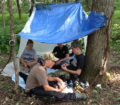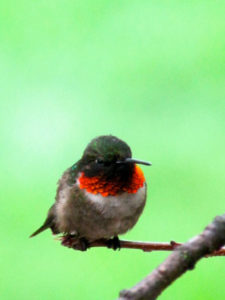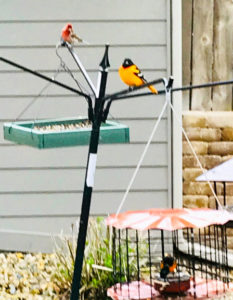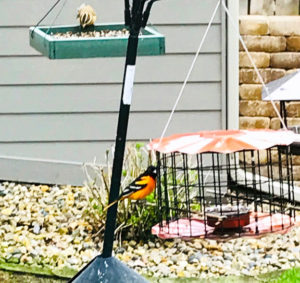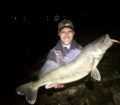By Darial Weisman
What a struggle spring was. Snow, snow, snow and wind, wind, wind. Even by graduation time, Mother Nature was still struggling to decide which season it was.
What this did, though, was keep more migrating songbirds around longer. We had days, even weeks of north, northwest and northeast winds, and since migrating songbirds like to move north during days of consistent south winds, we had more songbirds stay longer than ever before.
A friend of ours with some other bird watchers spent a day walking the woods of Marble Lake (west of Big Spirit Lake) and they counted over 100 different species of birds. The woods were alive with the sights and sounds of songbirds. Again, I think there were so many because of the prevalent north wind.
As a result, my husband and I found our backyard to be a blur of colors. Our songbird feeding stations became a true kaleidoscope of color. From early morning till dusk, it was a constant whirr of activity. Even after the migrating songbirds did move on, we still continue to host lots of songbirds. The fun thing for us is this all occurs on the south side of the house, adjacent to our window filled sunroom.
To meet the needs of our feathered visitors, our feeding stations include two platform feeders, one with a roof in which we put a cardinal mix, We have a safflower feeder, thistle feeder, peanut feeder, suet feeder, two grape jelly feeders and two hummingbird feeders. To this mix of feeders a kaleidoscope of colors flit in and out all day long: cardinals, evening grosbeaks, robins, doves, chipping sparrows, chickadees, different types of woodpeckers, orioles, hummingbirds and even a stray cowbird.
Each day provides a little glimpse into the lives of our feathered friends. For instance, our pairs of cardinals are the most secretive. They will come to the feeders throughout the day, but they prefer the quiet of early morning and late afternoon. Earlier this spring we witnessed the courtship of one of the cardinal pairs as the male took seeds from the platform feeder, flew to the female and fed her.
The orioles arrived on time. Even though it was a late spring, they arrived on cue during the first week of May. As always, the scouts came first. Our jelly feeders have a roof and cage around them to keep out the robins and grackles that also have a sweet tooth. Every year the orioles have to relearn how to access the jelly. They arrive and know that the jelly is right there. However, at first they sit on an adjacent feeder and size up the situation. Then they land on the cage itself and look and then fly to the other side and look and then hop to another feeder and look and then fly to a nearby tree branch and look…I guess you would call this problem solving at its best. Finally, one after another will enter the feeder and begin to satisfy their sweet tooth.
Usually around the same time, the hummingbirds arrive, and this year was no different. The little acrobats flit in, hover at the suction feeders we have at our sunroom windows, sometimes even landing to get their fill of sugar water. We have found we need more than one feeder, because they will keep chasing each other away from just a single feeder.
The last thing that we have are two bird waterers/baths. However, they are on our deck off to the west of the feeders. I truly believe that these waterers seal the deal for our birds. They get their water fill and an occasional bath. Probably the funniest one at the bird waterer is the robin that plops right down in the middle of it and takes a bath. Water flies everywhere and the deck below gets plenty wet.
My husband and I truly enjoy this backyard bird feeding hobby. I know many of you already are enjoying the same thing. I invite those who don’t to give it a try.

